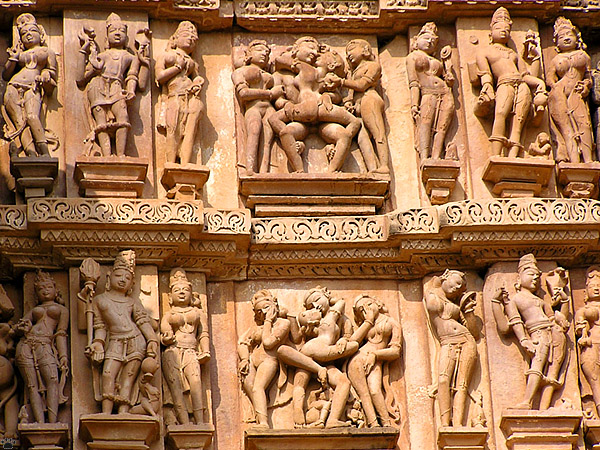
Temple sculptures, Khajuraho, Madhya Pradesh.
Part 12. Khajuraho
Khajuraho is a small village in Madhya Pradesh state, surrounded by a bunch of old temples. Although the temples are beautiful and intricately carved, the place is a long bus ride from anywhere, and would probably be known mostly to experts in ancient Indian art, was it not for wonderful eroticism of its sculpture. Now it's one of tourist highlights of the country, with an airport and a few dozen hotels.
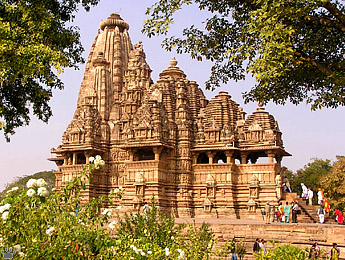 |
 |
| Mahadeva and Chitragupta Temples, Khajuraho. |
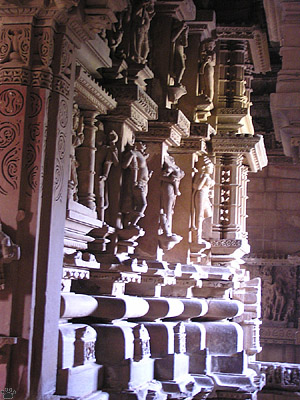
Inside a temple, Khajuraho. |
Hindu temples of Khajuraho were mostly built by Chandela dynasty in AD 930-1050, then abandoned and overtaken by the jungle. This saved them from being defaced or destroyed by Muslim invaders as sites of idol worship. |
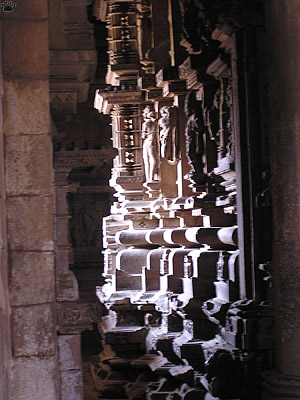
Inside a temple, Khajuraho. |
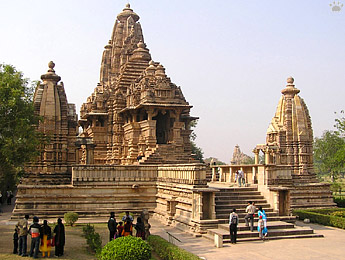
Lakshmana Temple, Khajuraho. |
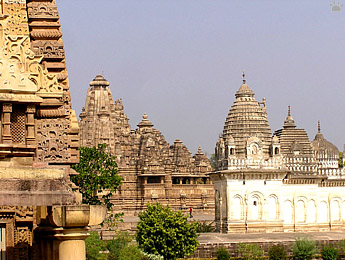
Temples of Khajuraho. |
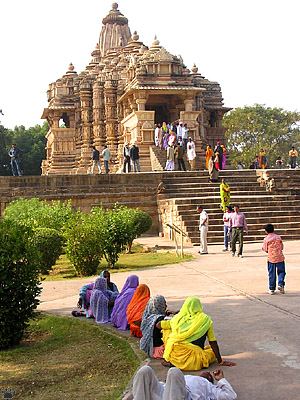
Chitragupta Temple, Khajuraho. |
In 1838, the British discovered the place, and removed the jungle vegetation (but not the bats). The temples again became active centers of Hindu worship, and, ironically, non-Hindus are no longer allowed into some of them. |
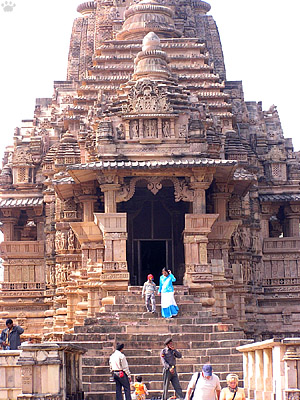
Lakshmana Temple, Khajuraho. |
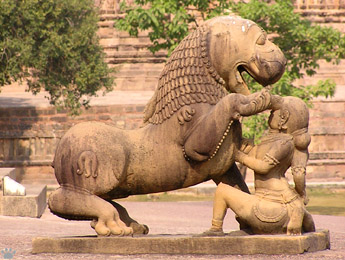
A girl caressing a lion, Mahadeva Temple, Khajuraho. |
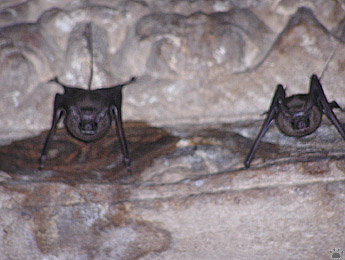
Mouse-tailed bats (Rhinopoma hardwickei), Khajuraho. |
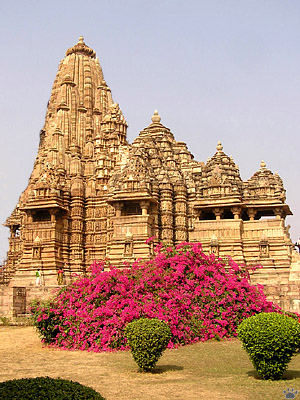
Kandariya Mahadeva Temple, Khajuraho. |
All temples look similar in design. On the outside, they symbolize Meru, the sacred (and imaginary) mountain of the Aryans. The center of the inside space is garbhadriha room, symbol of a womb-cave from which the Universe has emerged. |
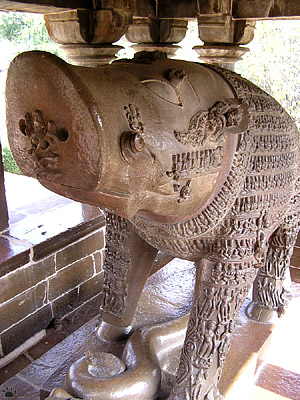
Vishnu's boar incarnation, c. 900 AD, Varaha Temple, Khajuraho. |
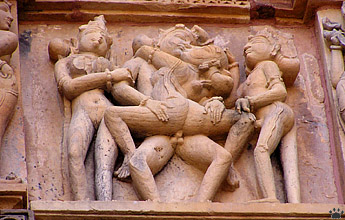 |
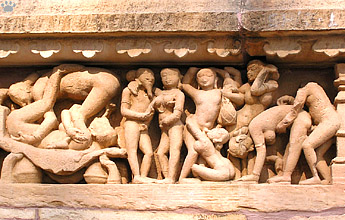 |
| Temple sculptures, Khajuraho. |
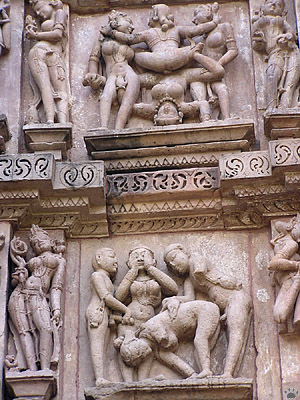
Temple sculptures, Khajuraho. |
Hundreds of sandstone sculptures line the walls of temples. The most popular are 16 large panels depicting sexual scenes in various interesting positions, some of which I've tried with fellow amateur art historians to highly satisfactory results. |
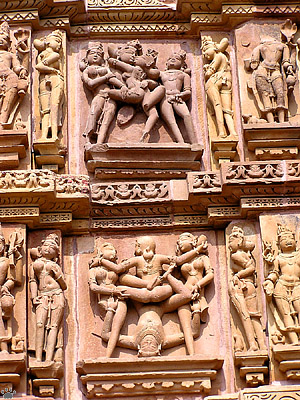
Temple sculptures, Khajuraho. |
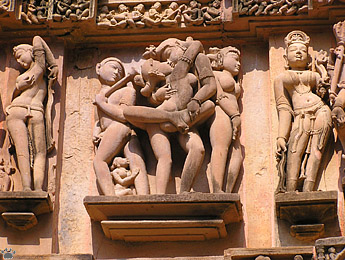 |
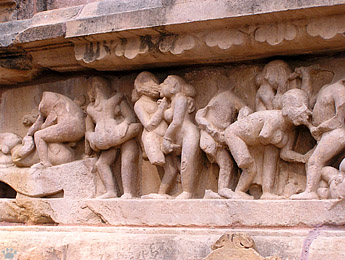 |
| Temple sculptures, Khajuraho. |
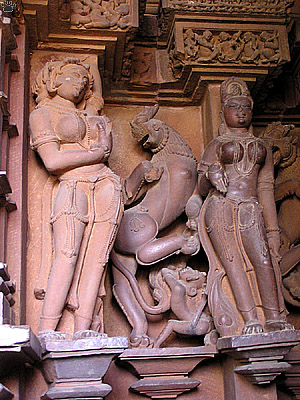
Woman with a monster, Khajuraho. |
More risky, but frequent, designs include women performing oral sex on dragon-like monsters. The meaning and purpose of all these erotic fantasies are still unclear to historians. The theories are too numerous to mention here. |
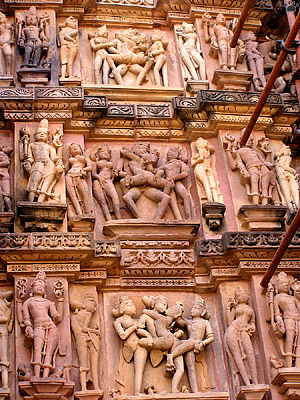
One of the 16 large panels, Khajuraho. |
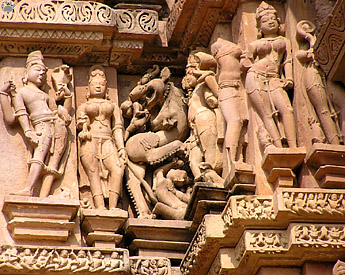
Woman and a monster, Khajuraho. |
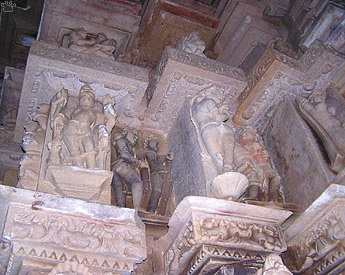
Sculptures in a Jain temple, Khajuraho. |
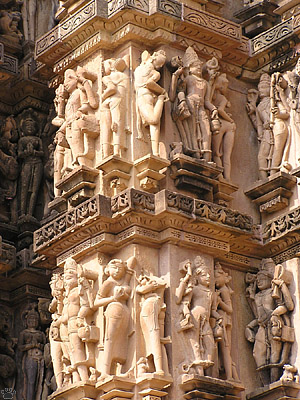
Temple sculptures, Khajuraho. |
Whatever the theology behind all the erotica, the carvings of Khajuraho are exquisite works of art, depicting, among other motifs, the most beautiful thing in human life - sex. It is a miracle that religious or moralistic fanatics didn't destroy them. |
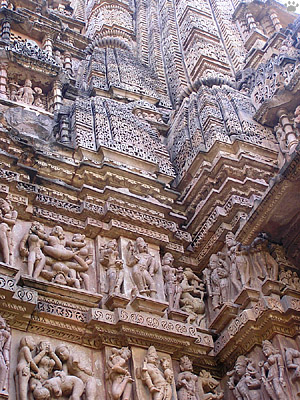
Temple walls, Khajuraho. |
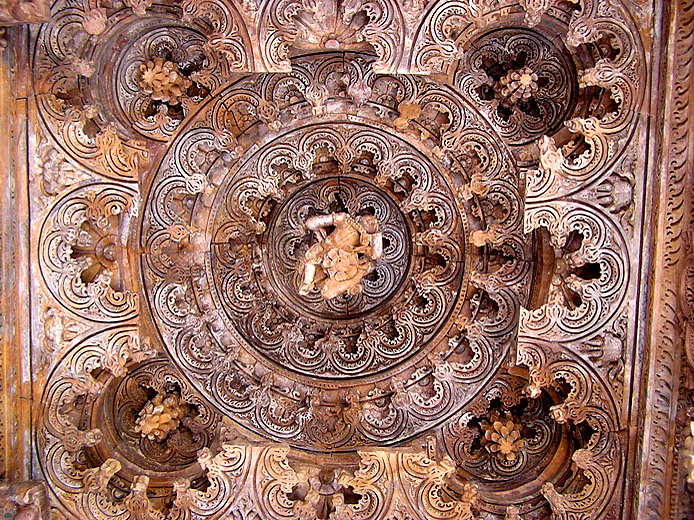
Ceiling of a Jain temple, Khajuraho.
|

Jain temples, Khajuraho. |
Khajuraho also has a group of Jain temples. They are very similar in design and decoration to Hindu ones, with erotic scenes much less common and less spectacular, but some other sculptures very skillfully carved. |
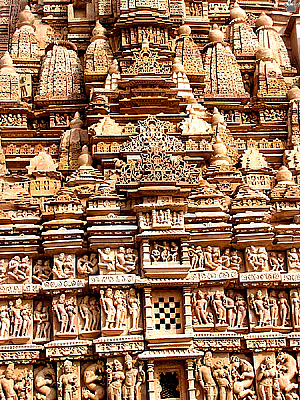
Wall of Jain temple, Khajuraho. |
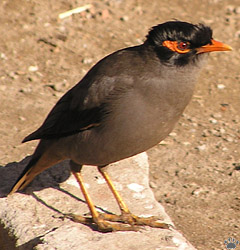
Bank myna (Acridotheres ginginianus), Khajuraho. |
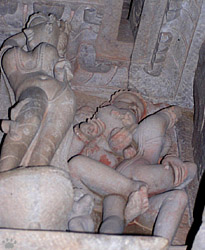
Jain temple sculptures, Khajuraho. |
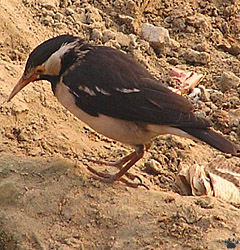
Pied starling (Sturnus contra), Khajuraho. |

Image of Parsvanath in Parswanath Jain temple, Khajuraho. |
Soon after Khajuraho era, Hindu culture went into deep decline. It ended up adopting Islam's psychotic attitude towards sex and nudity (even kissing in public is taboo in today's India), while its art deteriorated into kitsch. |

Image of Adinath in Shanti Nath Jain temple, Khajuraho. |
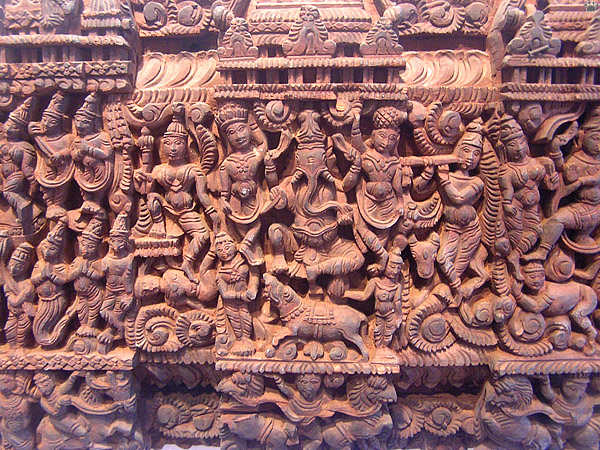
Temple sculpture, Khajuraho.
|
Part 13: Caves of Maharashtra
Back to Part 11
Home
|